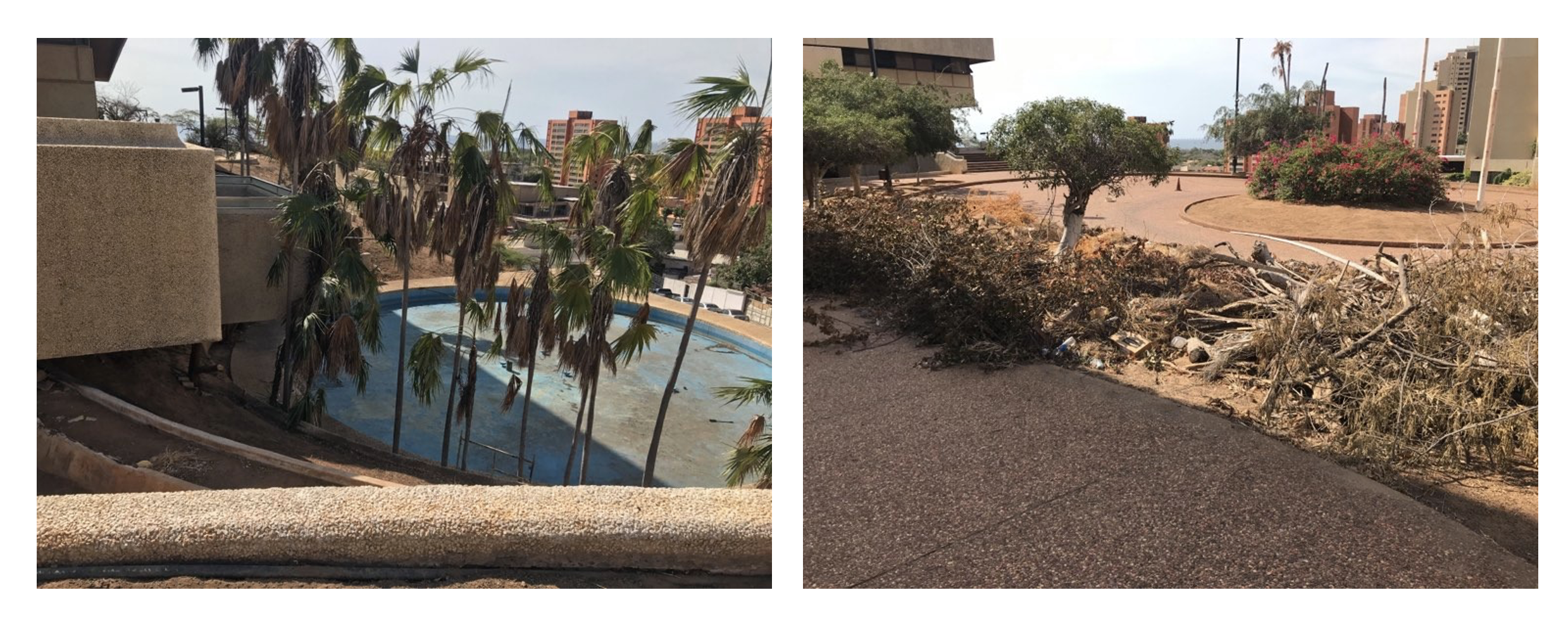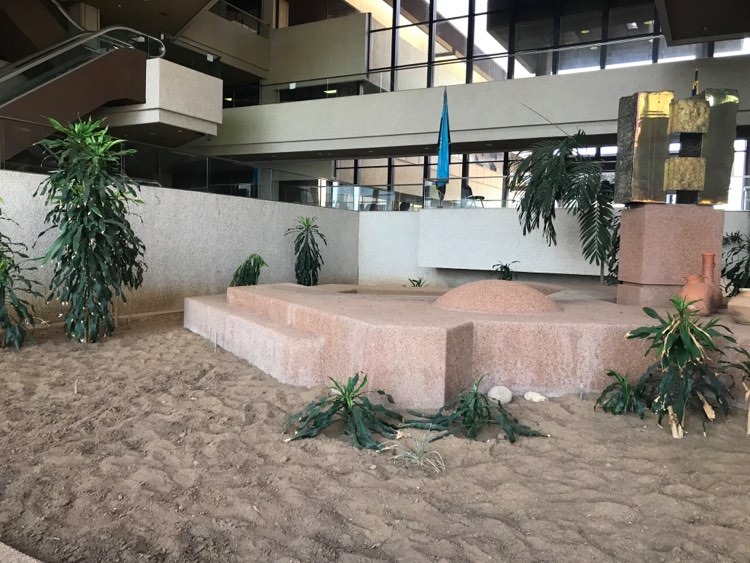Maracaibo Courts: One Year in the Dark
The main regional office of the Supreme Tribunal of Justice, a landmark building in Maracaibo, spent 12 months trying to function without power. There’s little space for metaphors with such heat and darkness


Photo: Antonio Matheus
In some ways, the news that fall between the cracks in Venezuela are amazing. In others, it’s understandable that they go unnoticed, considering everything that goes down in here, even without a global pandemic.
Case in point: the headquarters of Venezuela’s Supreme Tribunal of Justice in Maracaibo and the state’s Civil, Labor and Agrarian courthouses was about to turn one year without electric power. How’s it possible that we hadn’t heard of this?
Well, that’s sort of small potatoes in this country.
The building where the courthouses function is one of the true architectural landmarks in the region. The fantastic Banco Mara Building was inaugurated in July 1982, to commemorate the centennial of the now defunct Banco de Maracaibo, an institution that was so big and successful that it made its own banknotes at one point. The place itself, designed by architect José Hernández Casas, was deserving of the National Prize of Architecture and it was a must for school tours.
In 1994, in the midst of Venezuela’s banking crisis, Banco de Maracaibo ceased to exist, and its assets were confiscated. At the turn of the century, the Banco Mara Building became the headquarters for the regional Judicial Branch, and it’s hard to argue that such a space could be better used.
In the Belly of the Beast
Although I don’t practice law anymore, I took advantage of my degree and, for the first time in two decades, I got to use my lawyer credentials to pay a visit to Banco Mara and see in person how the building was doing.

“Something everyone misses has nothing to do with justice itself: the beautiful gardens Banco Mara was known for, today in disarray.”
Photo: Antonio Matheus
In the beginning of the pandemic, a generator in the zone exploded and left the whole building without power. That, of course, is a common occurrence around here; what’s really unthinkable is that this “glitch” wasn’t corrected until the end of February 2021, almost a year after the building went dark.
Being an official stronghold, I prepared myself for some espionage-level of inquiry, worthy of Gary Oldman in Tinker Tailor Soldier Spy. Turns out, Banco Mara is so poorly guarded that I could have been Leslie Nielsen in The Naked Gun. I took pictures without any supervision whatsoever.
For starters, there’s no air conditioning. This architectural wonder is full of windows that let in a great natural light, but being Maracaibo a perpetually hot city, this light is counterproductive if you have no AC. I wonder what kind of pictures I could have shot if I’d use an infrared camera, because the intensity of the body heat of the people inside would have rivaled the movie Predator.
I also didn’t see a proper suit in any of my two visits. Lawyers and judges go around in casual attires or in downright informal clothing. Clerks wear t-shirts and were forthcoming when talking about working without AC for over a year now. When I asked what they did to retrieve files in the dark, they said they had to use the flashlights on their phones.
Right now, the only courthouses functioning in Banco Mara are for Civil affairs, and I’m being liberal with the use of the term functioning. Labor and Agrarian Courthouses have been moved to locations downtown.

“They described a once majestic building that now operates without functioning bathrooms.”
Photo: Antonio Matheus
Banco Mara, due to its particular location at one of the only hills in Maracaibo, isn’t surrounded by hawkers and sellers, as most courthouses in the city are, so you won’t find places to eat or to make photocopies. There’s only one room in the building for copies, and it’s particularly hot with the temperatures the machines generate.
What you’ll find around Banco Mara Building is a long line of cars waiting to gas their tanks in one of the gas stations that the government recently repossessed. They actually use the classic circular driveway of the building to accommodate themselves in line.
I spoke with a couple of experienced lawyers who asked for anonymity, considering they have to go back to the courthouses to earn a living. They described a once majestic building that now operates without functioning bathrooms, where court hearings have no AC, where sentences are printed in recycled paper—meaning, paper that’s been already used, but still has blank sides. Something everyone misses has nothing to do with justice itself: the beautiful gardens Banco Mara was known for, today in disarray.
During that almost-year in the dark, sentences had to be printed outside Banco Mara, extremely troubling in a place where justice is already under massive suspicion, not to say plain out disregard. A courthouse operating in darkness invites for dark dealings.
Let There Be Light
The Banco Mara Building is such a fine work of architecture that, although it’s in rough shape, it isn’t totally dilapidated; it’s yet another misused structure and institution in the country. A site that, with the proper care, could be restored to its glory days, something no one seems to be willing (or able) to do at this point.
Even the fact that it went without electricity for almost a year is fitting for a judicial system that’s already in the shadows, and although Banco Mara has working electricity again, it doesn’t have much more. Let’s yearn for the day where we finally can say “Let there be light,” and our pride comes from the present and not just the past.
Caracas Chronicles is 100% reader-supported.
We’ve been able to hang on for 22 years in one of the craziest media landscapes in the world. We’ve seen different media outlets in Venezuela (and abroad) closing shop, something we’re looking to avoid at all costs. Your collaboration goes a long way in helping us weather the storm.
Donate




